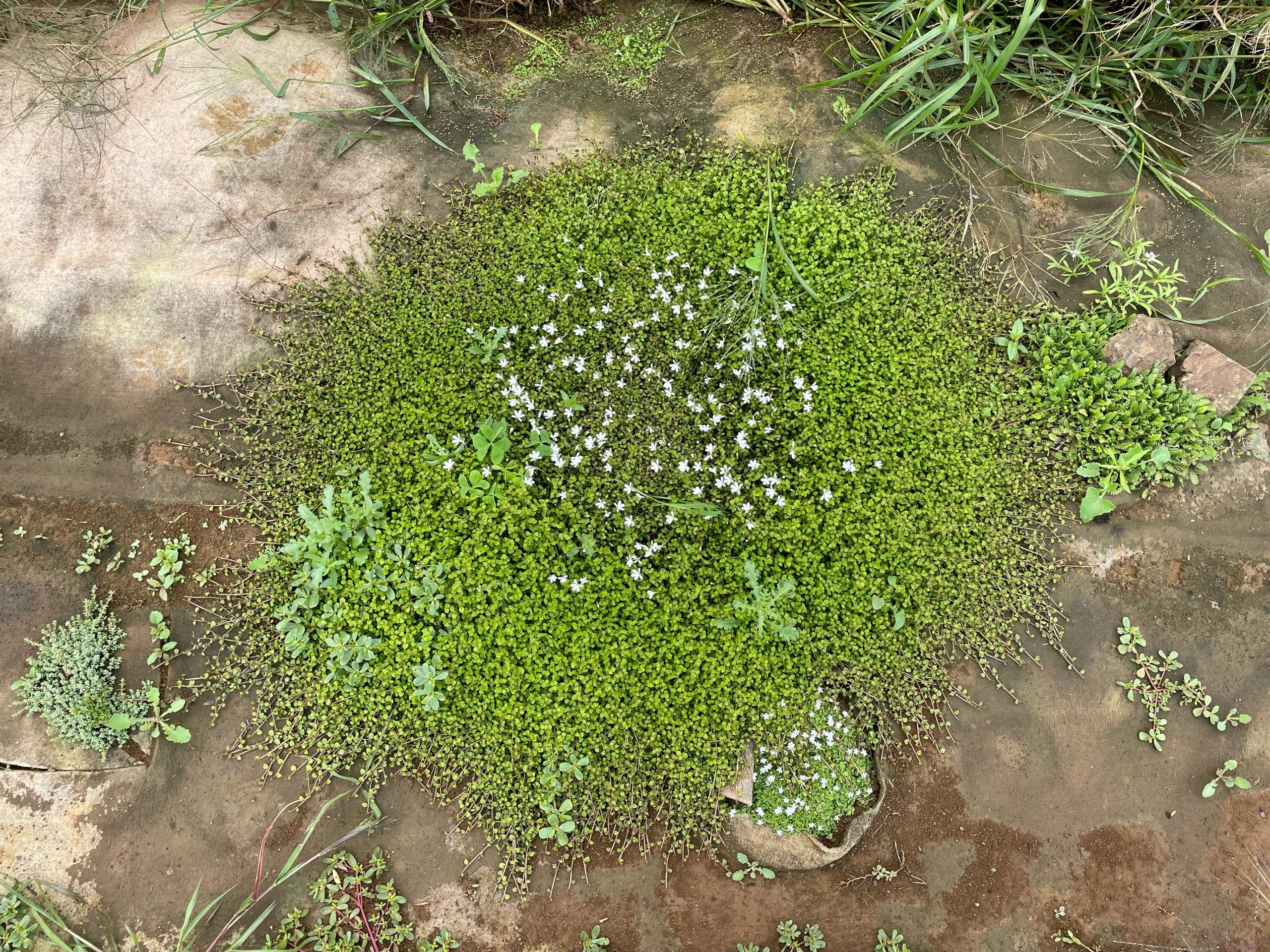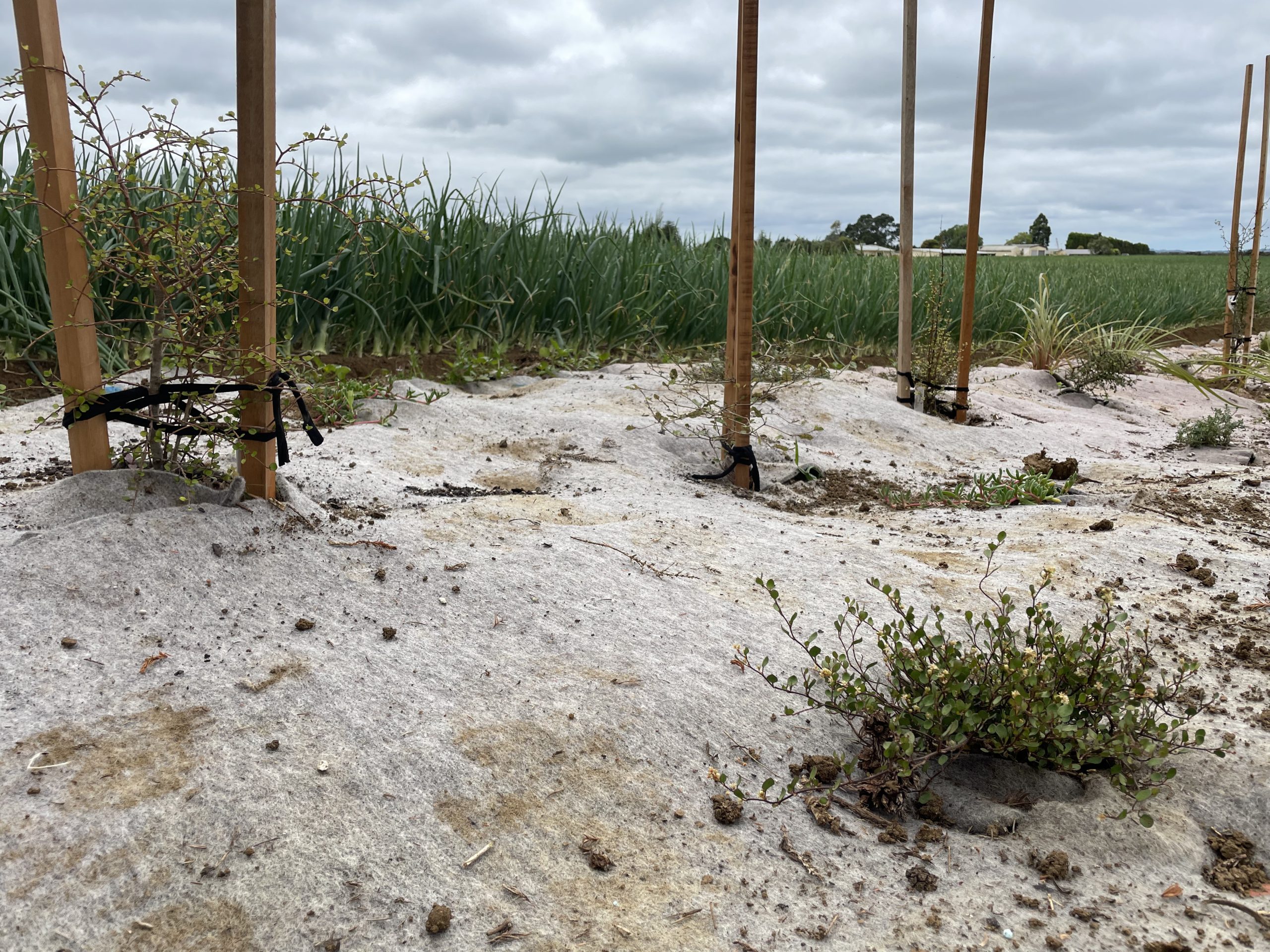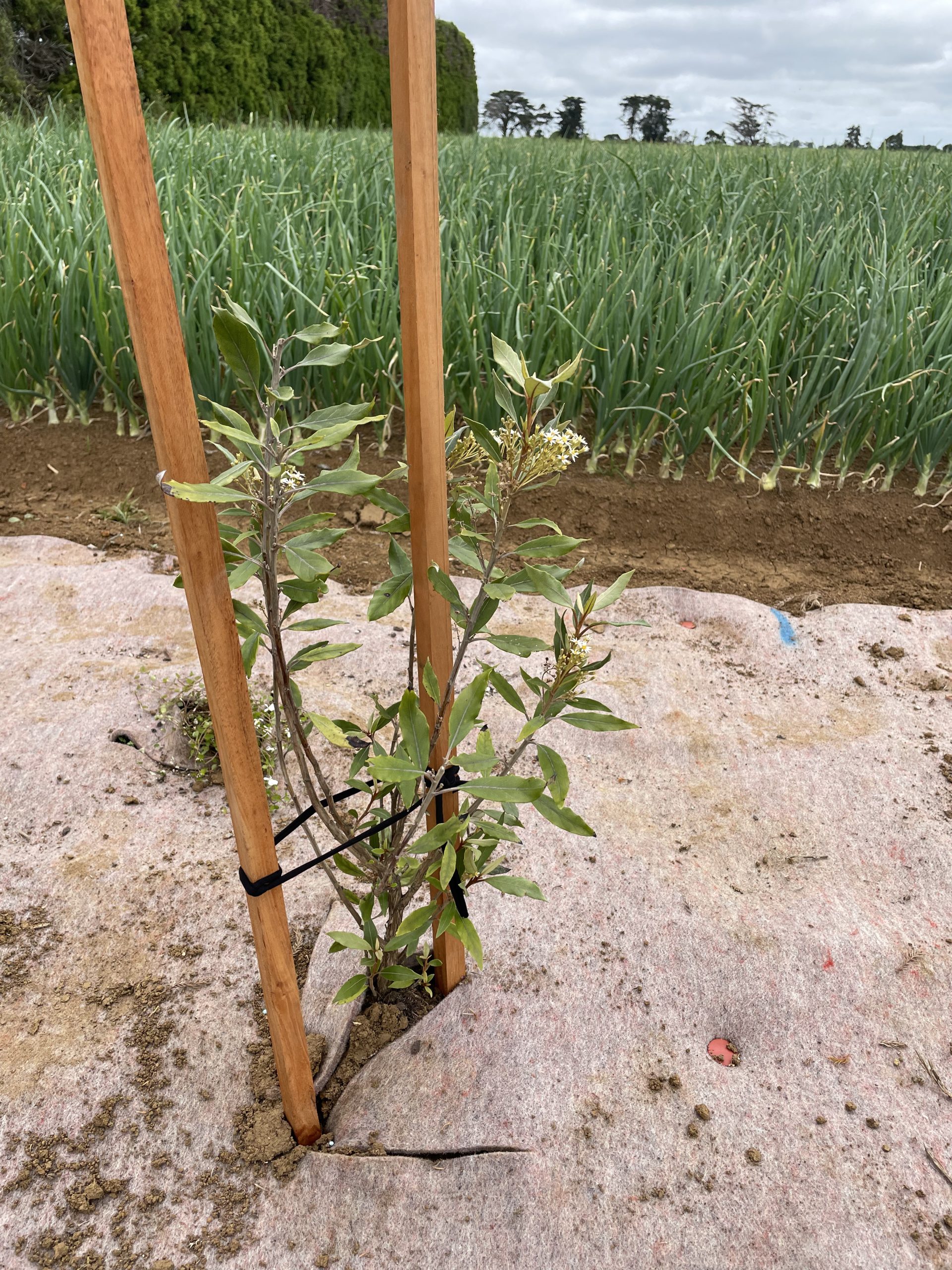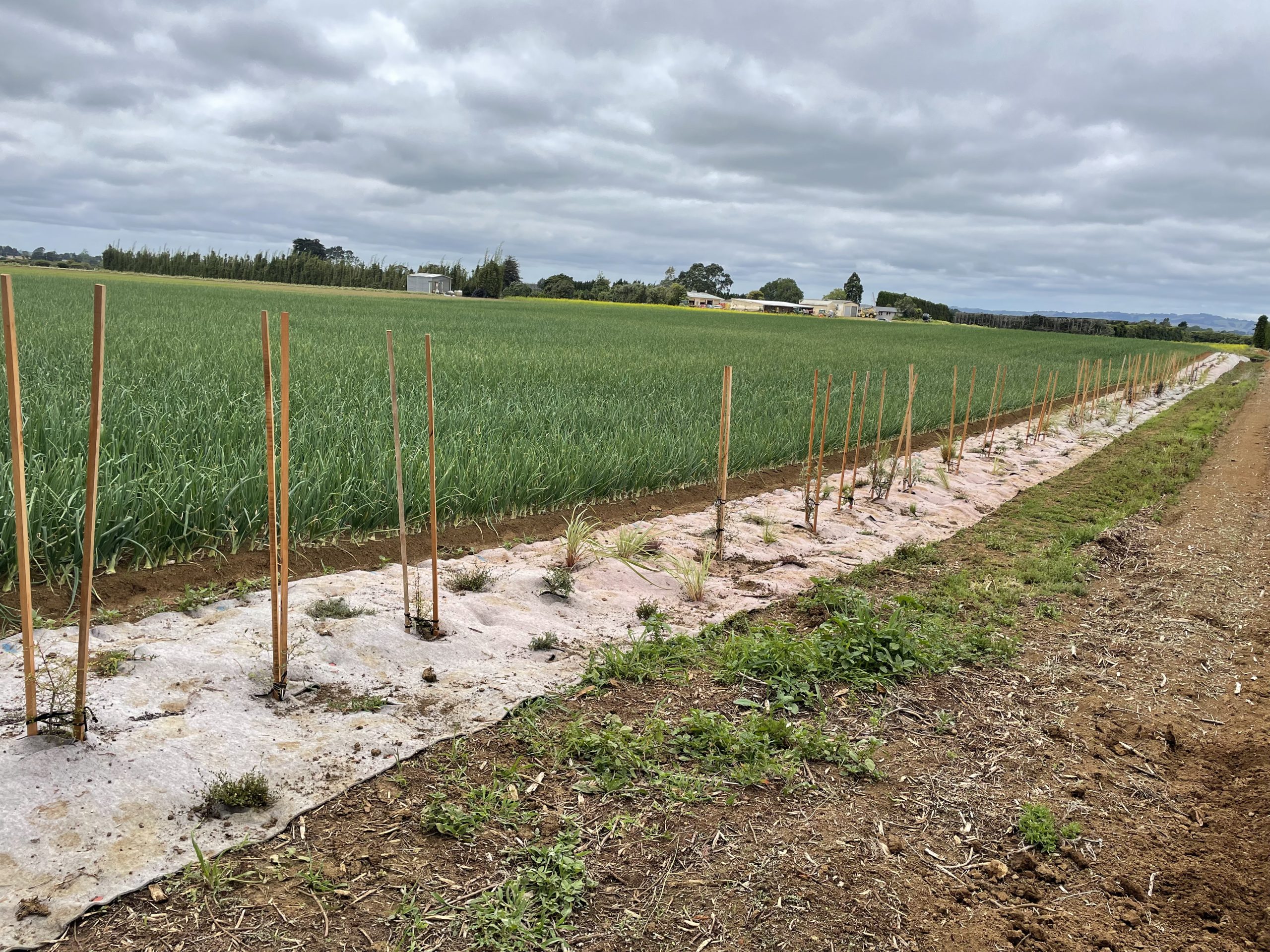A Vegetables NZ-ALT project looking to increase the abundance of beneficial insects on vegetable farms is planting natives with the aim of generating a year-round beneficials food source.
Located at the Pukekohe demonstration farm, the first plants went into the ground in December 2022 and are intended to provide a permanent source of shelter, nectar, alternative food and pollen (SNAP) to attract and retain beneficial insects.

Native plantings in early December 2022, with the mid-season onion crop alongside. Photo credit: Olivia Prouse.
The project’s goal is to provide growers with a resource they can use to increase the biodiversity on their farm, resulting in more beneficial insects, fewer insect pests in crops, and less insecticides required.
It draws on research by Foundation for Arable Research (FAR) in the South Island, and Australian studies, where native species have been successfully used to increase beneficial insect and pollinator numbers on arable and vegetable farms.
The natives chosen for the Vegetables NZ project were drawn from the FAR work and the Plant-SyNZ database. They were selected based on the chosen species not being associated with any vegetable crop pests, or with or without beneficial insect associations for crops grown on the demonstration farm.
The areas chosen for planting were sites which are not in use for crop planting, such as next to waterways or drains, or at headlands. Biodegradable wool matting and biopins were used for weed suppression, which will breakdown over a three year period.

Native planting along the drain the front of the Pukekohe demonstration block. Photo credit: Olivia Prouse.
Both groundcover and shrubs big enough to grow into a small hedge row have been planted. The groundcover was in flower immediately, attracting beneficial insects such as hoverfly and soldier bugs. There are also plentiful numbers of beneficial spiders and mites which seem to be drawn by the wool weed mat.
To see beneficials in action on the flowering native plants, click this link:
VNZI beneficials video Video credit: Olivia Prouse.
Plants in December were 10cm across in size and by March were measuring 30cm to 1 metre in diameter, depending on the species. The groundcover is expected to grow up to 30cm high, still low enough for machinery like spray booms to not get caught up while turning, while the shrubs are expected to reach 1-2 metres in height and as much as 2 metres across. The hedgerows are underplanted with groundcover to suppress any weeds.

Taken in late February 2023, the growth in groundcover natives since planting on December 1, 2022, is apparent. Photo credit: Olivia Prouse.
Initial results have been encouraging, with a noticeably higher ratio of beneficial insects to pests at the end of the paddock closest to the native planting. In addition, in the pumpkin crop this season four to five insecticide applications have not been applied based on crop monitoring, which the grower would have applied outside of the trial. There had also been a severe caterpillar problem in the pumpkin crop the previous season which did not reoccur this year.
There have also been challenges. With Pukekohe experiencing two extreme rain events in early February, parts of the plantings were underwater for some time, and the flooding also moved a large quantity of soil from the crop on top of the wool matting. The weed mat stayed in place despite the deluge of rain and water movement.
The wool weed mat has proved effective in suppressing the weeds, though applying a herbicide before planting the natives would have helped with weeds coming through the grow holes for the natives. The wool mat is unable to suppress the weeds coming through from the soil deposited on top during the rain events.

Close up of the native plants in their wool weed mat. Photo credit: Olivia Prouse.
Next steps for this project will involve monitoring the abundance of beneficial insects and pests. Any new information learned about the native plant species will be added to the Plant-SyNZ database. This might include the discovery of other insects a particular native plant attracts that are not already listed in the database.
The project will be looking at which natives are working most effectively in the crop environment, whether they grow better in the wet or dry, which species mix will collectively provide a year-round food source, their tolerance to herbicide application on nearby crops, as well as checking plant heights are as expected, and monitoring their flowering times.
Learn more about this project as it progresses in the Our Projects section of our website.
If you are interested in knowing more about the A Lighter Touch programme, subscribe to our newsletter In Touch by clicking this link.

Photo credit: Olivia Prouse.
